Looking for the best lavender companion plants? You’re in the right place. Learn what you can plant next to lavender and what you should avoid planting near lavender. Get ideas about which flowers grow well with lavender, which fruit grows well with lavender, which herbs grow well with lavender, and which vegetables grow well with lavender. It’s all here, along with tips about the best place to plant lavender, the best fertilizer for lavender, and whether lavender needs a lot of water. I’ve been growing and harvesting lavender for over 20 years, and it’s one of the most fragrant, easy-care, best zone 8 perennial plants in our garden. If you are looking for a low-maintenance, sun-loving, deer-resistant addition to your collection, read on to learn what pairs well with lavender plants and how simple it is to grow beautiful lavender.
Table of Contents
The Lavender Planting Backstory in Our Garden
Even though we live in an area that gets a lot of rain, we are fortunate to have some garden areas that get great southern sun exposure. Since I’m a huge fan of gardening smarter, not harder, I’m always on the lookout for reliable plants that will return every year. During the last couple of decades, we have had lavender in a few different areas in the yard. The latest lavender bed is on the south side of the house, close enough to take advantage of reflected warmth from the south wall. Why the interest in good lavender companion plants? I’m still trying to decide which plants would look best around the lavender. Should I plant flowers? Herbs? Fruits? Maybe I should plant some lavender in the vegetable garden in the perennial row with the rhubarb. There are many options for great lavender companions. Since lavender is such a favorite in the garden, you can guarantee I know exactly which are the best lavender companion plants possible. If you are asking yourself, “What can I plant next to lavender?” read on!
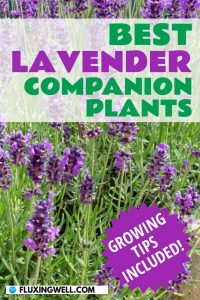
Common Questions about Planting Lavender
Where is the Best Place to Plant Lavender?
Lavender is a hardy plant that thrives in full sun and well-drained soil. It is best to plant lavender in a location with good air circulation and protection from strong winds. The ideal soil pH for lavender is between 6.5 and 7.5, and it does well in sandy or gravelly soils. It is also important to avoid planting lavender in areas with high humidity or where the soil remains wet for extended periods, as this can lead to root rot and other fungal diseases. So, if you can find a sunny, well-drained area with good air circulation and soil pH between 6.5 and 7.5, you are set!
Not sure how to test your soil ph level? Get one of these handy soil testers. This one monitors moisture, light, nutrients, and ph levels. You can get the results in seconds, and easily move the probe wherever you need it. No batteries needed! It’s a simple, fast, and affordable way to monitor the soil anywhere in your yard and garden.
When is the Best Time to Plant Lavender?
The best time to plant lavender is in the spring or fall. In the spring, it is best to plant lavender after the last frost date in your area, when the soil has warmed up and the weather is mild. In the fall, it is best to plant lavender at least 6-8 weeks before the first expected frost date in your area, which will give the plant enough time to establish roots before the winter.
It is important to avoid planting lavender in the summer, especially during hot and dry weather, as this can stress the plant and make it more susceptible to disease and pest problems. Additionally, planting in the summer can make it difficult for the plant to establish roots before winter, which can reduce its chances of surviving the cold season.
Why is Lavender a Good Companion Plant?
Lavender is considered a good companion plant for several reasons:
Pest control: Lavender contains natural oils that repel certain pests such as mosquitoes, flies, and moths. By planting lavender near other plants, it can help to protect them from these pests.
Attracting pollinators: Lavender is a favorite of bees and other pollinators, which are important for the health and reproduction of many plants. By planting lavender, it can help to attract these beneficial insects to your garden.
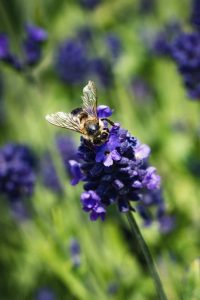
Soil health: Lavender has a deep root system that can help to improve soil structure and drainage. It also has the ability to suppress weed growth, which can help to keep the soil healthy and reduce competition for nutrients and water.
Aesthetics: Lavender is a beautiful plant that adds color and texture to a garden. Its flowers and foliage can complement a wide range of other plants, making it a popular choice for garden design.
I like lavender because it does not require constant watering and can thrive without needing to be fertilized often. The deer that visit our yard do not like to eat it. So, a plant that can repel pests, attract pollinators, improve soil health, and add beauty to a garden? Yes, please!
What is the Best Combo with Lavender?
What grows well with lavender? In this list you will find a variety of versatile combinations you might choose from for your garden. Some of the combinations are more suited to an herb garden, some are more suited to a perennial garden border. I am considering planting a row of lavender along one edge of our vegetable garden, as there are many vegetable garden plants that would benefit from lavender growing nearby. The possibilities are many. The combination you choose depends on personal preferences, as well as the specific growing conditions in your garden. By experimenting with different plant combinations, you can create a beautiful and functional garden that suits your needs and enhances the beauty of your outdoor space. Let’s get started by taking a look at some fabulous flower and lavender combinations.
Which Flowers Grow Well with Lavender?
Lavender Companion Flowers
Lavender pairs well with many different types of flowers. You may be considering planting flowers with lavender in a border or a perennial garden. When planning a border or perennial garden with lavender, it’s important to choose plants that complement the color and texture of the lavender, as well as its growing requirements. If you are deciding what to plant with lavender in a border or perennial garden, some of the best flowers to grow with lavender include:
Roses: Lavender and roses complement each other well, both in terms of their color and their scent. Roses can also benefit from the pest-repelling properties of lavender. Although we no longer grow hybrid tea roses, we are big fans of old garden roses around our yard and garden areas.
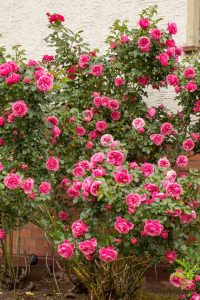
Salvia: Salvia is another herbaceous plant that thrives in full sun and well-drained soil, making it a good companion for lavender. Both plants attract pollinators and have a similar growth habit.
Echinacea: Can you plant echinacea and lavender together? Echinacea, also known as coneflower, is a hardy perennial that produces large, daisy-like flowers in shades of pink, purple, and white. It is also drought-tolerant, making it a good choice to grow with lavender.
Catmint: Catmint, also known as Nepeta, is a low-maintenance perennial that produces delicate blue or purple flowers. It is also a member of the mint family, which makes it a good companion for lavender.
Alliums: Alliums, such as ornamental onions, produce tall spikes of spherical flowers in shades of purple, pink, and white. They are also known for their deer and rabbit resistance, which can help to protect more vulnerable plants like lavender.
Geraniums: Can you plant lavender and geraniums together? Lavender and geraniums can be planted together as they have similar growing requirements and can complement each other well in the garden. Geraniums are known for their colorful flowers and ability to attract beneficial insects like bees and butterflies, which can also help to pollinate lavender.
Marigolds: Can you plant lavender and marigolds together? Planting marigolds around your lavender can help to provide natural pest control and attract beneficial insects like bees and butterflies to your garden. Marigolds are also easy to grow and maintain, making them a good choice for gardeners looking for a low-maintenance plant that can add color and texture to their garden.
Daylilies: Daylilies produce a wide range of flower colors and can complement the purple or blue flowers of lavender. They also tolerate a wide range of growing conditions, making them a versatile companion plant for lavender.
Which Fruits Grow Well with Lavender?
Lavender Companion Fruit
Lavender can be a good companion plant for several fruits, as it can help to repel pests and attract beneficial insects. Here are some examples of fruits that grow well with lavender:
Strawberries: Lavender can help to repel slugs and other pests that may damage strawberry plants. Additionally, bees and other pollinators are attracted to lavender, which can help to promote healthy fruit production.
Blueberries: Blueberry bushes can benefit from the insect-repelling properties of lavender. Lavender can also help to attract bees and other pollinators, which are important for blueberry production. I think a row of lavender would be a great addition to the eastern side of our vegetable garden, where our blueberry bushes reside. I value a prolific blueberry crop for making syrup, jam, cobblers and crisps.
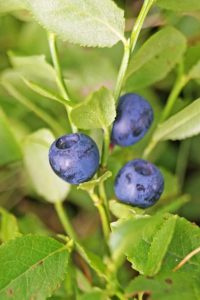
Apples: Lavender can help to repel codling moths, which are a common pest that can damage apple trees. Additionally, bees and other pollinators are attracted to lavender, which can help to promote healthy apple production. This is great for us, since we have a small apple orchard.
Peaches: Lavender can help to repel peach tree borers, which are a common pest that can damage peach trees. Additionally, bees and other pollinators are attracted to lavender, which can help to promote healthy peach production.
Planting lavender near fruit trees and bushes can help to promote a healthy garden ecosystem and improve fruit production. That’s a winning combination!
Which Herbs Grow Well with Lavender?
Lavender Companion Herbs
Lavender can be a good companion plant for many different herbs. Here are some examples of herbs that grow well with lavender:
Parsley: Parsley is known to attract beneficial insects such as ladybugs, lacewings, and hoverflies, which can help control pests like aphids and spider mites that may harm lavender.
Rosemary: Lavender and rosemary are both Mediterranean herbs that have similar growing requirements, making them good companions in the garden. They can also help to repel pests and attract beneficial insects.

Thyme: Like lavender, thyme is a hardy herb that prefers well-draining soil and full sun. It can also help to repel pests and attract pollinators.
Sage: Lavender and sage both have aromatic leaves that can be used for culinary and medicinal purposes. They also share similar growing requirements and can help to repel pests.
Oregano: Both oregano and lavender are aromatic herbs that have similar soil and water requirements. Oregano can attract beneficial insects such as bees, butterflies, and predatory wasps, which can help pollinate the lavender flowers and control pests such as aphids and spider mites.
Chamomile: Lavender and chamomile both have calming and soothing properties, making them a good combination for teas and other natural remedies. They can also help to attract beneficial insects to the garden.
Planting lavender with other herbs can help to create a healthy and diverse garden ecosystem. By combining different herbs, you can improve soil health, repel pests, and attract beneficial insects. Bonus: Growing herbs is a pleasantly fragrant way to have a deer-resistant garden.
Which Vegetables Grow Well with Lavender?
Lavender Companion Vegetables
Looking for what vegetables to plant with lavender? Lavender can be a beneficial companion plant for many vegetables, as it can help to repel pests and attract beneficial insects. Here are some examples of vegetables that grow well with lavender:
Tomatoes: Lavender can help to repel pests that may damage tomato plants, such as whiteflies and spider mites. Additionally, bees and other pollinators are attracted to lavender, which can help to promote healthy tomato production.
Peppers: Like tomatoes, peppers can benefit from the insect-repelling properties of lavender. Additionally, lavender can help to attract bees and other pollinators, which are important for pepper production.
Eggplant: Lavender can help to repel pests that may damage eggplant plants, such as flea beetles and spider mites. Additionally, bees and other pollinators are attracted to lavender, which can help to promote healthy eggplant production.
Squash: Lavender can help to repel squash bugs, which are a common pest that can damage squash plants. Additionally, bees and other pollinators are attracted to lavender, which can help to promote healthy squash production. This is great because I love to grow butternut squash to make mini pizzas and soup.
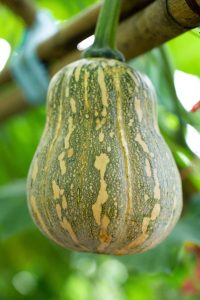
Cabbage: Lavender can help to repel cabbage moths, which are a common pest that can damage cabbage plants. Additionally, bees and other pollinators are attracted to lavender, which can help to promote healthy cabbage production.
Green Beans: Green beans are nitrogen-fixing plants, which means they can convert atmospheric nitrogen into a form that can be used by other plants. Lavender, on the other hand, prefers soil with low nitrogen levels, making beans a great companion plant as they can provide the necessary nitrogen without competing for other nutrients.
Onions: Onions contain sulfur compounds that can repel pests such as aphids, carrot flies, and slugs, which can also harm lavender. Moreover, the strong scent of onions can mask the attractants that attract pests, making it less likely for them to find their way to the lavender plant.
By using companion planting techniques with vegetables and lavender, you can reduce the need for pesticides and other chemicals. You can create a more sustainable garden and save money when you grow plants that naturally repel pests.
What Should You Not Plant Near Lavender?
While lavender is a good companion plant for many different types of plants, there are some plants that may not grow well when planted near lavender. Here are some bad companion plants so you will know what not to plant with lavender:
Other plants that require moist soil: Lavender prefers well-draining soil and does not tolerate wet feet, so it’s best to avoid planting it near plants that require moist soil, such as ferns, astilbes, and hostas.
High-nitrogen plants: Plants that require high levels of nitrogen, such as corn and other cereal grains, can compete with lavender for nutrients in the soil. This can result in reduced growth and flowering of the lavender plants.
Plants that produce excessive shade: Lavender requires full sun to thrive, so it’s best to avoid planting it near trees or other plants that produce excessive shade.
Plants that are prone to disease: Some plants are prone to specific diseases, which can spread to nearby plants. It’s best to avoid planting lavender near plants that are prone to disease, such as potatoes.
Plants with allelopathic properties: Some plants produce chemicals that can inhibit the growth of nearby plants. It’s best to avoid planting lavender near plants with allelopathic properties, such as black walnut trees, asparagus, and fennel.
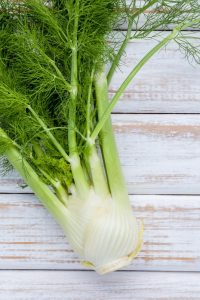
While lavender is a versatile, adaptable, and can grow well with many different types of plants, it’s important to consider its growing requirements and potential competition for resources when selecting companion plants.
Quick Lavender Companion Plant Reference Chart
| Best Lavender Companion Plants | Worst Lavender Companion Plants |
| Lavender Companion Plants: Flowers | Asparagus |
| Alliums | Black walnut trees |
| Catmint | Fennel |
| Daylilies | Potatoes |
| Echinacea | |
| Geraniums | |
| Marigolds | |
| Roses | |
| Salvia | |
| Lavender Companion Plants: Fruit | |
| Apples | |
| Blueberries | |
| Peaches | |
| Strawberries | |
| Lavender Companion Plants: Herbs | |
| Chamomile | |
| Oregano | |
| Parsley | |
| Rosemary | |
| Sage | |
| Thyme | |
| Lavender Companion Plants: Vegetables | |
| Cabbage | |
| Eggplant | |
| Green beans | |
| Onions | |
| Peppers | |
| Squash | |
| Tomatoes |
Best Hardy Varieties of Lavender
Lavender is a hardy plant that can thrive in a range of climates and growing conditions. If you know your plant hardiness zone, that can assist you in making your choice of lavender plants. My garden is in zone 8b, so any of the varieties listed below would work in my garden. If you are not sure of your plant hardiness zone, you can find out what it is by putting your location in this handy reference guide. Here are some of the best hardy varieties of lavender:
English lavender (Lavandula angustifolia): English lavender is the most common and widely grown variety of lavender. This is the kind I have growing in my garden right now. It has a compact habit and produces fragrant flowers in shades of purple, blue, and pink. The dried blossoms produce a larger quantity of lavender oil than other lavender varieties. English lavender is hardy to USDA zones 5-9.

French lavender (Lavandula dentata): French lavender is a larger plant than English lavender and has gray-green leaves and toothed flower spikes. It produces fragrant flowers in shades of pink, purple, and blue. French lavender is hardy to USDA zones 8-11. Here is a closeup of the serrated leaves on a French lavender plant.
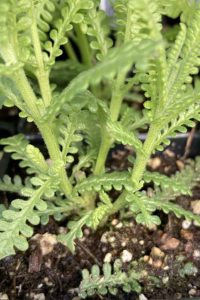
Spanish lavender (Lavandula stoechas): Spanish lavender is a shorter plant with distinctive, tufted pineapple-shaped flower clusters that come in shades of purple, pink, and white. It has gray-green leaves and a strong, sweet fragrance. Spanish lavender is hardy to USDA zones 7-9.
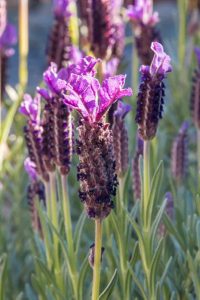
Lavandin (Lavandula x intermedia): Lavandin is a hybrid of English and spike lavender and is a larger plant than English lavender. It produces fragrant flowers in shades of purple, blue, and white. Lavandin is hardy to USDA zones 5-9.
Hidcote lavender (Lavandula angustifolia ‘Hidcote’): Hidcote lavender is a compact, bushy plant that produces fragrant, deep purple flowers. It has gray-green leaves and a strong, sweet fragrance. Hidcote lavender is hardy to USDA zones 5-9.
When selecting a variety of lavender, it’s important to consider your growing conditions and climate, as well as the size and habit of the plant. By selecting a hardy variety of lavender, you can enjoy the beauty and fragrance of this versatile plant for years to come.
How Many Lavender Plants Do I Need?
The number of lavender plants you need will depend on several factors, such as the size of the area you want to plant, the desired density of the plants, and the growth habit of the variety you choose.
As a general rule of thumb, you can plant lavender 12-18 inches apart, but this can vary depending on the specific variety and growing conditions.
If you are planting lavender in a border or bed, you may want to consider planting in groups of three or five for a more natural look.
To calculate the number of plants you need, you can measure the length and width of the area you want to plant, and then determine the spacing and number of plants based on that area. For example, if you have a border that is 10 feet long and 2 feet wide, you would need approximately 20-30 plants if you spaced them 12-18 inches apart.
It’s also important to consider the mature size of the plants when determining how many you need. Some varieties of lavender can grow quite large, while others are more compact. Be sure to research the specific variety you are interested in and consider the space it will need to grow and thrive.
Does Cutting Lavender Encourage More Flowers?
Yes, cutting lavender can encourage more flowers to bloom. Lavender plants should be pruned regularly to maintain their shape and promote healthy growth. Pruning can also help to encourage more flowers to bloom, as it stimulates the plant to produce new growth.
To encourage more flowers on your lavender plant, you can use a technique called deadheading, which involves removing spent flowers from the plant. This helps to redirect the plant’s energy towards producing new growth and flowers, rather than producing seeds. Deadheading can be done by pinching off the spent flowers with your fingers or using a pair of pruning shears. My favorite all-purpose pruning shears are made by Felco and have lasted for years.
In addition to deadheading, you can also prune your lavender plant in the spring by cutting back the previous year’s growth by about one-third. This helps to promote new growth and encourages the plant to produce more flowers. However, be careful not to prune your lavender too late in the season, as this can affect the plant’s ability to survive the winter.

Overall, cutting and pruning your lavender plant can help to promote healthy growth and encourage more flowers to bloom. Regular maintenance and care will help to ensure that your lavender plant continues to thrive and add beauty to your garden.
Can Lavender be Divided?
Lavender plants can be divided, but it’s not as common as with some other perennial plants. Lavender has a woody stem at the base that makes division challenging, but it can be done with some effort and care.
If you want to divide a lavender plant, it’s best to do it in the spring or fall when the plant is dormant. Here are the steps you can follow:
Dig up the entire lavender plant and gently shake off the soil to expose the roots.
Use a sharp, clean knife to carefully cut the root ball into two or more sections. Each section should have at least one healthy shoot and a portion of the root system.
Replant the divided sections in their new location, making sure to plant at the same depth as they were originally planted. Water well and keep the soil consistently moist until the plants are established.
Keep in mind that dividing lavender can be stressful for the plants, and it may take a season or two for them to recover and start growing vigorously again. So, if possible, it’s best to avoid dividing lavender unless it’s necessary. Instead, you can propagate lavender from stem cuttings or start new plants from seed.
Does Lavender Transplant Well?
Lavender plants can be successfully transplanted, but it’s important to take some care to minimize stress to the plant during the process.
The best time to transplant lavender is in the spring or fall when the weather is mild and the plant is not actively growing. Here are some steps to follow when transplanting lavender:
Choose a new planting site that has well-drained soil and receives full sun. Lavender prefers soil with a pH of 6.5 to 7.5.
Dig a hole that is slightly larger than the root ball of the lavender plant.
Gently lift the lavender plant from the ground, taking care not to damage the roots. You can use a garden fork or shovel to loosen the soil around the plant before lifting it.
Place the lavender plant into the new hole, making sure that it is planted at the same depth as it was originally growing.
Backfill the hole with soil, gently firming it around the plant.
Water the lavender plant thoroughly to help settle the soil and remove any air pockets.
Mulch around the base of the plant with a layer of organic matter to help retain moisture and suppress weeds.
After transplanting, keep the soil consistently moist but not waterlogged until the lavender plant has established itself in its new location. Avoid fertilizing the plant for the first few weeks after transplanting to reduce stress on the roots. With proper care, the lavender should thrive in its new location.
What is the Best Fertilizer for Lavender?
Lavender plants prefer soil that is low in nutrients, so they do not require heavy fertilization. In fact, too much fertilizer can harm lavender and reduce its aromatic oils. However, adding some organic matter to the soil before planting can help improve soil structure and fertility.
If you do choose to fertilize your lavender plants, it’s best to use a slow-release fertilizer that is high in phosphorus and low in nitrogen. Nitrogen can cause lavender plants to grow lush foliage at the expense of flower production, so it’s important to avoid overfeeding with nitrogen-rich fertilizers. A good option is a 5-10-5 or 5-10-10 fertilizer that is designed for flowering plants.
You can also use a balanced organic fertilizer, such as compost or well-rotted manure, that will release nutrients slowly over time. Simply work a layer of organic matter into the soil around the base of the plant, taking care not to cover the crown of the plant.
It’s important to fertilize lavender sparingly, as too much fertilizer can damage the roots and reduce the plant’s lifespan. It’s better to underfeed than to overfeed lavender. If your plants are growing well and producing plenty of flowers, they may not need any additional fertilizer at all.
Does Lavender Need a Lot of Water?
Lavender is a drought-tolerant plant that prefers dry conditions and well-draining soil. Overwatering lavender can cause root rot and reduce the plant’s lifespan, so it’s important not to keep the soil too wet.
When you first plant lavender, it’s important to water it regularly until it becomes established. After that, you can reduce watering to once or twice a week, depending on the weather and soil conditions. Lavender plants prefer to dry out between waterings, so it’s important to let the soil dry out slightly before watering again.
In general, lavender requires less water than many other garden plants, and overwatering can cause more harm than underwatering. If you’re not sure whether your lavender needs water, simply check the soil around the base of the plant. If the top inch of soil feels dry to the touch, it’s time to water again.
How Do You Winterize Lavender?
Lavender is a hardy perennial plant that can survive cold temperatures and frost. However, there are a few steps you can take to winterize your lavender and help it survive the winter:
Prune: In the fall, prune your lavender back by about one-third to one-half of its size. This will help prevent snow and ice from breaking the branches and also promote fuller, bushier growth in the spring.
Water: In the weeks leading up to the first frost, water your lavender deeply to ensure that the roots are well-hydrated before winter. However, be sure not to overwater, as lavender does not like to sit in wet soil.
Mulch: Apply a layer of mulch around the base of the plant to help insulate the roots and prevent them from freezing. Use a lightweight mulch, such as straw or dried leaves, and apply it to a depth of 2-3 inches.
Protect: If your lavender is in a particularly exposed location, consider wrapping it in burlap or covering it with a protective layer of frost cloth. This will help protect the plant from harsh winds and snow.
Avoid fertilizer: Avoid fertilizing your lavender in the fall, as this can stimulate new growth that is vulnerable to frost damage. Instead, wait until spring to fertilize.
By taking these steps to winterize your lavender, you can help ensure that it will come back strong and healthy in the spring.
Need More Planting Ideas?
Check out the tips for the best companion plants for eggplant to learn what to grow with those beauties. If you like the idea of companion planting, you might be interested in reading about the best companion plants for pumpkins, sunflowers, hydrangeas, blueberries, chives, raspberries, radishes, garlic, or rosemary. Get tips for growing stunning dahlias. Are you a beginning gardener? Try planting some foolproof, easy-care perennials, or learning about the best companion plants for columbine. There are so many exciting plants to grow!
Keep Track of Your Garden with a Journal Logbook
Now that you have learned about some compatible companion plants, keep track of your planting ideas, goals, and plans with a free garden journal logbook. Choose the pages you want to print and customize them as you wish to record monthly, weekly, and daily garden tasks, lists, weather, and planting arrangements. There are also grid pages for easily designing the layout of your vegetable garden, flower garden, or landscape. Print it out and put it into a notebook you can take with you to the garden (that’s what I do). It’s nice to have all of your garden information in one place.

Free Online Garden Planner Layout Template
Now that you know which are the best companion plants for lavender, you might need a way to plan your garden layout. Whether you are planting vegetables, flowers, or herbs near your lavender plant, this online garden planner can help you visualize your design and bring it to life. With garden tasks that need your attention, this is one way to save time.
It’s fully customizable when you make your own copy and includes two editable chart pages for noting planting specifications.
Get my free online garden layout planner template!
Organize Your Garden Tasks with a Free Garden Planner Notebook
As a result of needing to keep track of garden tasks throughout the year, I decided to begin a garden planner notebook. It has a page for each month, along with notes pages. If a garden planner notebook seems like a good idea to you, good news! You can get it here!
Get the garden notebook!
Have a wonderful week, and may all of your lavender-growing endeavors meet with success!

Lisa Mitchell is a wife, mom, and school librarian who likes to grow fruit, herbs, vegetables, and flowers on her family’s small Pacific Northwest farm. To learn more about what this website has to offer gardeners, click on over to the Garden page.
Like what you read here? Please give it a share!
Want more great garden, food, or travel ideas? Follow FluxingWell on Pinterest, Facebook, Instagram, and X for the latest posts, tips, and inspiration.

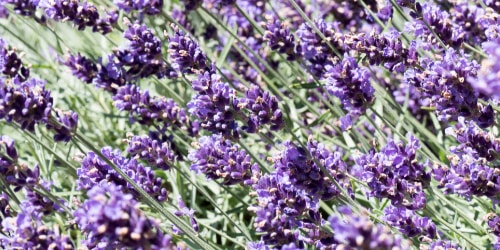



I love Lavender and loved reading about lavender companion plants in this post. Thanks for sharing and wishing you the best for your garden this season!
Thank you so much! I hope to add more lavender plants to my collection.
I love lavender but strangely don’t have any in my garden. Your article has inspired me to plant some. Knowing the best companion plants is so helpful as well as all your other care tips. I am a great believer in giving the plants the most help they can get.
Oh, I’m so glad you were inspired by my lavender-planting ideas. Happy gardening!
Such a helpful post about the best lavender companion plants! I didn’t know that there are so many. Thanks for providing this useful info for all gardeners!
You are most welcome. I’m glad you found the lavender info useful.
This is a perfect post for learning about the best lavender companion plants. I’m counting down the days to planting time here in Ohio. I’m inspired to add some lavender into my planting project.
Oh, great! It is such an easy plant to care for with a lovely fragrance as well.